#national hangeul museum
Text
also. freitag. heute waren wir (wie es sich gehört) im national museum of korea und haben uns da ein bisschen die ausstellung angeschaut...
eigentlich wollten wir danach auch noch ins national museum of hangeul aber leider haben wir im korea-museum so lang gebraucht das das hangeul museum bis dahin schon zu war.... naja.... sind wir halt noch bisschen draußen rumgelaufen....


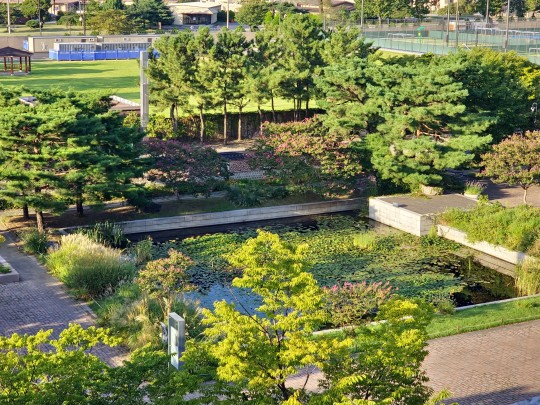
war aber trotzdem sehr cool, die haben in dem museum sehr hübsch die geschichte und entwicklung von korea und so gezeigt, mit sehr coolen ausstellungsstückchen!
(so viel mehr gibt es tatsächlich auch gar nicht zu erzählen, weil wir sind halt legit den ganzen tag nur dadrin rumgelaufen.... deshalb freut euch über ein paar bilder...)



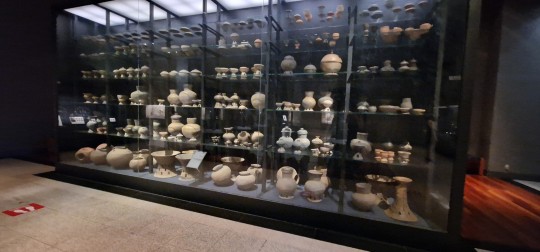


(achso, nochmal zu dem kleinen bild unter diesen komisches gesichtern von denen ich vergessen hab was das war, auf dem bild links sieht man schuhe. jap. das sind schuhe von soldaten. die armen. nur so kurz zwischendurch...)
das highlight waren aber glaub ich trotzdem die beiden räume in denen sie jeweils alle wände und die decke um dich rum mit projektoren angestrahlt haben das es so aussah als stünde man zum beispiel in einer historischen grabkammer (dort wurden einem dann die wandmalereien näher gezeigt und erklärt). in dem anderen raum kann ich gar nicht so genau sagen was sie da gezeigt haben, es war aber auch sehr cool (irgendwas zum buddhismus und den höllen und so und danach noch was zu der reise von nem familienvater quer durchs land.... war aber alles sehr sehr cool gemacht!!)
und als wir mit dem museum dann fertig waren sind wir los und haben uns was zu essen geholt (und das war mal wieder sehr sehr gut!), diesmal gabs salat für lara und veganes bibimbap mit (sehr scharfer) tomatensuppe als beilage...

ansonsten ist heut aber tatsächlich auch nichts spannendes passiert, mal schauen wies morgen so wird.....
2 notes
·
View notes
Photo

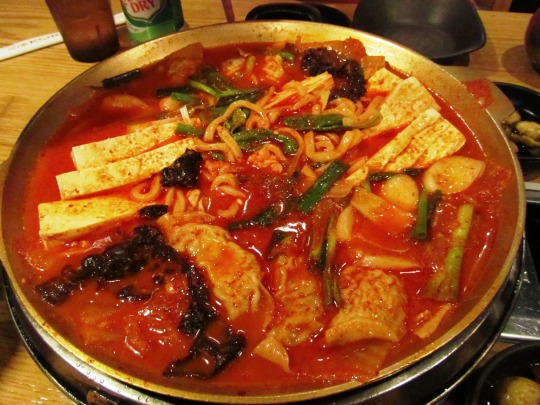
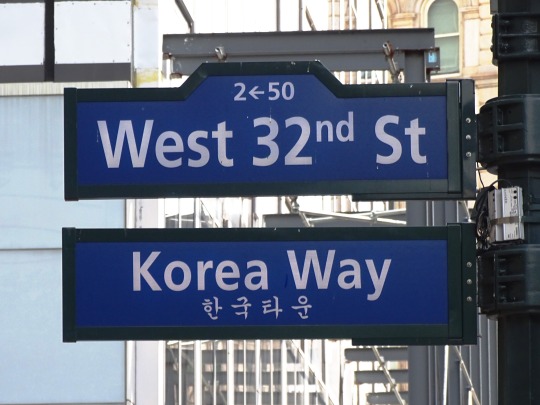
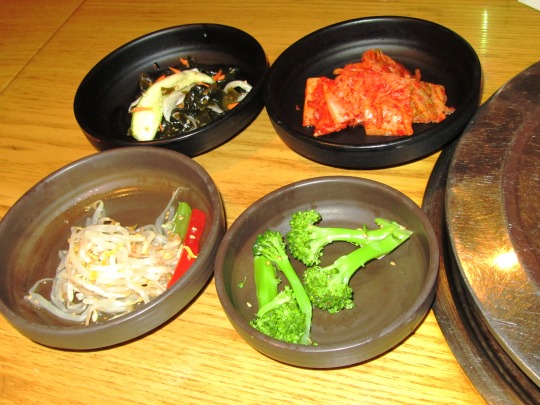

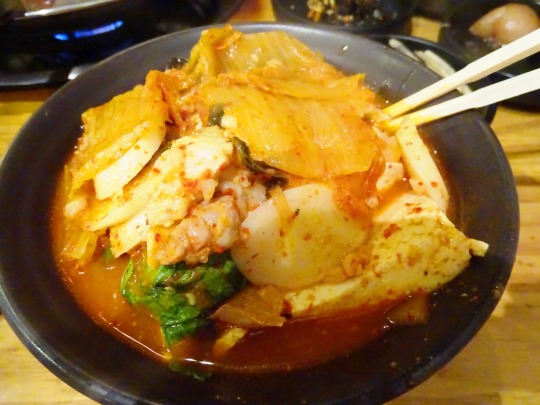




The hangul alphabet was published in Korea on October 9, 1446.
South Korea Hangul Day
South Korea Hangul Day, also known as Korean Alphabet Day, is observed annually on October 9. It’s a national holiday to commemorate the invention and proclamation of the Korean alphabet, known as Hangul (or Hangeul). It’s also celebrated in North Korea on January 15 as ‘Chosun-gul’ Day. Before the invention of Hangul, Koreans wrote using Classical Chinese with native phonetic writing systems. Hangul Day has been a national holiday since 1970, except for the years 1991 until 2012. We observe the day to commemorate King Sejong’s achievement and the promulgation of the ‘Hunminjeongeum,’ a document describing an entirely new script for the Korean language, which was later known as Hangul.
History of South Korea Hangul Day
Since its first inception in 1926, the date of Hangul Day has varied. In 1945, the South Korean government declared October 9 as Hangul Day, an annual legal holiday, and since October 9, 1970, Hangul Day has been an annual national holiday in South Korea. However, between 1991 and 2012, Hangul Day’s status as a holiday was canceled due to the South Korean government being pressured by major employers to increase the country’s annual number of workdays. As a result, the day remained as a commemoration but workers didn’t get the day off. On November 1, 2012, its status as a national day was restored.
Before Hangul was invented, Koreans used Chinese characters to write with native phonetic writing systems. In addition to a large number of characters to be learned, the grammatical differences between Korean and Chinese languages also became difficult for Koreans to write using Chinese characters. As a result, only those who had the privilege of education were literate. Therefore, King Sejong decided to create the Korean alphabet to promote literacy among all Koreans, and he proclaimed the publication of Hangul in 1446.
Despite all the benefits of Hangul, it almost went out of existence during the Choson dynasty. At the time, the elites who desired to preserve their status saw that Chinese characters were the only true way to write Korean. Hangul was then effectively banned by King Yeonsangun in the early 16th Century but then saw a revival towards the end of the century. It then had a resurgence in the 19th Century, and gradually grew more common, especially due to its role in Korean nationalism during the era of the Japanese occupation. In the 1970s, there was a decline in the use of Chinese characters, paving the way for the prevalent utilization of Hangul in almost all Korean writings today.
South Korea Hangul Day timeline
1894 The Initial Use in Official Documents
Hangul is adopted and used in the writing of official documents.
1910 The Continued Use in Schools
Although the official language of Korea becomes Japanese during the Colonial Rule, Hangul is still taught in Korean-established schools.
1938 The Script is Banned
Hangul is banned in schools as part of Japanese cultural assimilation.
1941 The Documents are Outlawed
All publications written in Hangul are outlawed.
1945 The Script is reinstated
Hangul is reinstated in Korea’s writing system following Korea’s independence from Japan’s colonial rule.
South Korea Hangul Day FAQs
Is learning Korean hard?
Korean might be ranked as one of the more difficult languages to learn by the Foreign Service Institute (FSI), but it’s still very much possible to learn as a non-native speaker.
Is Korean read left to right?
In today’s Korea, the majority of Korean is written horizontally, to be read from left to right.
Is Hangul scientific?
The Korean writing system, the Hangul, is considered to be the most scientific phonetic alphabet system. This is because its characters are based on the shapes of the parts of the human body that are used to enunciate the sound of those characters.
How to Observe South Korea Hangul Day
Visit the museum of King Sejong
Learn the alphabet
Raise the national flag
It’s fitting to visit the museum of King Sejong to celebrate Hangul Day. He was the one who invented the Korean alphabet. You can see exhibits explaining the creation of Hangul inside the museum. His reign is often seen as a golden period in Korean history.
The best thing to do to celebrate Hangul Day is to learn Hangul itself. If you are a non-Korean but interested in Korean culture, you may want to learn its alphabet. Hangul Day is the best time to do so!
A simple way to honor Hangul Day is to raise the Korean national flag. It can represent the pride of the country — the Korean alphabet.
5 Interesting Facts About The Korean Language
It’s a language isolate
‘Seoul’ means capital city
Verbs come last in the Korean sentences
It’s different in North and South Korea
It’s ‘our’ instead of ‘my’
It is said that Korean is commonly classified as a language isolate, meaning that it shows no significant link to any other existing languages.
Seoul, the capital city of South Korea, literally means ‘capital city’ in Korean.
Korean is a subject-object-verb (SOV) language.
The North and South Korean languages have distinct pronunciations, vocabularies, and even grammatical rules.
In the Korean language, the speakers use ‘our’ or ‘we’ instead of ‘my’ or ‘me.’
Why South Korea Hangul Day is Important
To commemorate
A holiday to learn
To celebrate where we come from
Hangul Day is observed to commemorate the invention and proclamation of the Korean alphabet. Besides, it’s celebrated in honor of King Sejong as the creator of Hangul.
Hangul Day can be observed by learning the Hangul itself. It’s the best time for those who are interested in learning about the Korean language and its alphabet.
Language is said to be a fundamental aspect of cultural identity. Celebrating Hangul Day can mean taking pride in one’s national identity.
Source
#hangul alphabet#published#Korea#9 October 1446#anniversary#travel#Korean history#original photography#sign#Koreatown#Midtown Manhattan#New York City#summer 2017#2013#architecture#cityscape#vacation#USA#South Korea Hangul Day#Korean Alphabet Day#SouthKoreaHangulDay#Banchan#food#restaurant#Miss Korea BBQ#Kimchi Mandu Jeongol Hot Pot#tourist attraction#landmark#West 32nd Street#Korea Way
2 notes
·
View notes
Note
stacy if it's ok with you i would love to hear any recommendations you have for things to do/see/eat in sk! <3
ohhhh i have so much! i apologize in advance, i’ll try my best but romanize korean words is the worst challenge for me, so i will write some names of places in hangeul
i love beautiful nature, historical places, beautiful places in general, delicious food and comfortable relaxation, so most of the things i write about here will be related to this
very beautiful places that i liked (but be ready for a lot of people most of the time): seokchon lake park, yongsan family park, namsan baekbeom square/namsan park, naksan park, lotte world is good but i don't have that much patience for unrealistic queues😭 그림제작소 혜화 very nice painting studio, in GN perfume studio you can do your own perfume
quieter cultural places: my art museum, national museum of korea and theater in it, myogaksa (very beautiful buddhist temple), bukchon hanok village (classic), gilsangsa temple, korean folk village, 국립예술단체 공연연습장(N스튜디오)
the first problem i encountered in korea is that there are many beautiful cafes, but really not all of them are tasty🥲 growers (그로어스) it was one of the few places where it was beautiful and tasty at the same time
i also really love design and art in general and in korea there are maaaaany different exhibitions and super cool pop-up stores, but many of them are temporary, so one big recommendation is to follow the enjoyexhibition account on ig, they post all the information about different places
in fact my google map looks like this (and that’s not counting naver map and this is only seoul) and i could write more, but i’m afraid it will be a lot
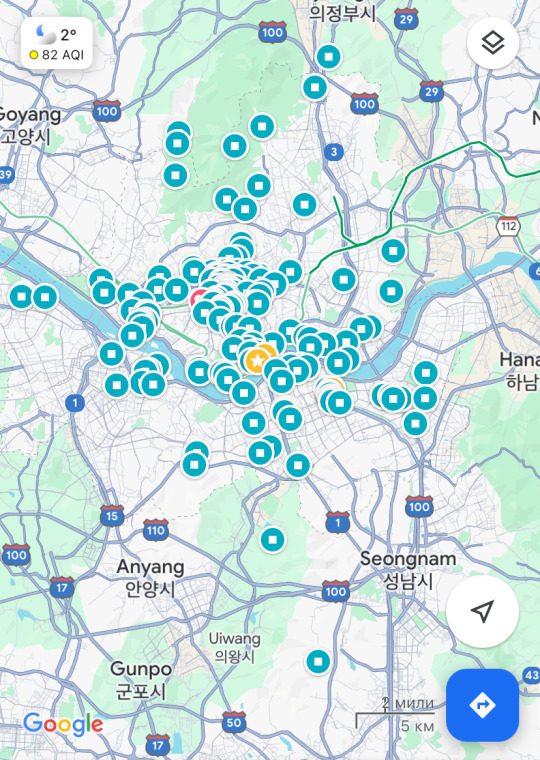
0 notes
Video

And right there in front THE MOST IMPORTANT LYRICS EVER:
RING DING DONG RING DING DONG
RING DIGGI DING DIGGI DING DING DING 😁😁😁
cr: @Kpop_Herald
#SHINee#Onew#Jonghyun#Key#Minho#Taemin#Ring Ding Dong#Kpop Herald#@Kpop_Herald#twitter#National Hangeul Museum
1K notes
·
View notes
Photo



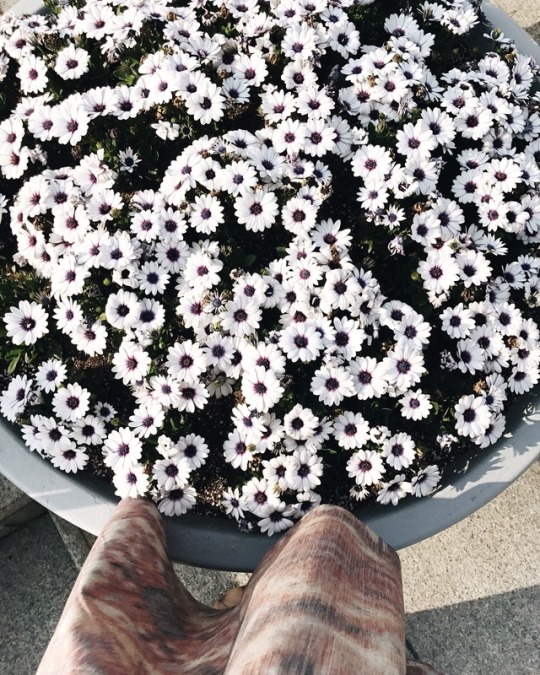

Turns out that you found my previous (first) post about Seoul interesting and helpful, so I decided to keep sharing!
Let’s take a walk around Ichon?
It’s a really lovely neighborhood near the National Museum of Korea. Come here for the museums, but take a walk around the museum grounds and stay for dinner and cakes! There are a lot of fabulous spots to take great photos or to just enjoy some quiet time and read a book on a bench under the trees. Come check it out! I promise you, it’s worth it. The view of Namsan is amazing! And there’s even koi fish in the Mirror pond!
National Hangeul Museum is currently holding a special exhibition on Hangeul in Design. #recommended 🙌 It's rather small, but a highly enjoyable treat and the exhibition design is great!
While you are at it, check out the "Roads to Arabia" special exhibition which is currently hosted by National Museum and will run until August 2017. This exhibition was first launched at the Louvre in Paris in 2010 and since then has travelled to 10 museums in Europe and the US.
⠀⠀⠀⠀⠀⠀⠀⠀⠀
📍 How to get here: Ichon station, exit 2.
🍜 Where to eat: exit 3-1. Lots of cute little cafes, restaurants and bakeries 🍣🥘🍰. Hans Bakery is one of my favorites. Their carrot cake is to die for. But whatever you do, don't eat at the cafe in front of the National Museum 😖 #notgood
⠀⠀⠀⠀⠀⠀⠀⠀⠀
7 notes
·
View notes
Text
The Red Sleeve details are out of this world.
In 2014, the National Hangeul Museum published a book out of a series of letters written in hangeul by Yi San, who later became King Jeongjo, the 22nd monarch of Joseon. The sixteen letters were written by the king both as a child and an adult who had already taken the throne.
This were the first three letters unveiled to the public:


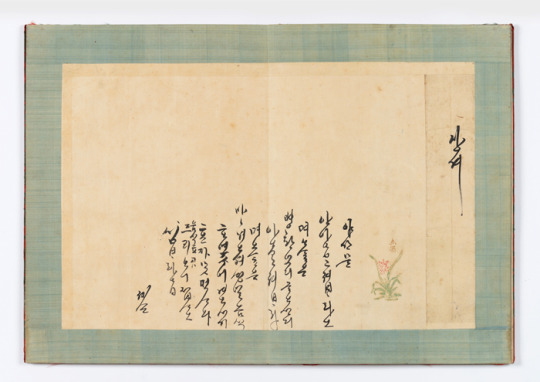
Some knetizens have pointed out the incredible resemblance of the writing style used in the saeguk with the very own calligraphy of the real Yi San. Check it out yourself.
This are some screenshots I took myself while watching the most recent episode:


The production and direction teams are making an incredible good job. They are playing no games with such detailed cinematography.
#the red sleeve cuff#the red sleeve#kdramas#korean dramas#saeguk#korean history#drama icons#this is how things are done#lee seyoung#lee junho
263 notes
·
View notes
Photo



Today is National Handwriting Day. In this book, you’ll see some beautiful examples of Korean handwriting, whether brushes and bamboo on paper or script on fabric, ceramics, and metal.
"Offering an extraordinary window into Korean culture, Beyond Line: The Art of Korean Writing brings a multidisciplinary approach to the history of Korean writing--from the earliest texts from the Three Kingdoms period to its use in contemporary art. This volume discusses the social and cultural conditions that led to the creation of calligraphic works by a wide range of people, including kings, queens, officials, scholars, painters, monks, and even slaves. It also explores the variety of materials employed in the creation of the art--from paper, ink, and bamboo to ceramics, silk, and metal. In addition, it looks at how calligraphy was used both to maintain Korea's historical class structure and, as literacy spread, to incite social change for women, merchants, and other segments of society. The authors explore how the invention of the hangeul phonetic script led to a more global identity for Korea, and how this script continues to shape contemporary art and design. Beyond Line illuminates the restrained beauty, strength, and flexibility of Korean calligraphy."-- from publisher.
Beyond line : the art of Korean writing
Edited by Stephen Little, Virginia Moon ; essays by Insoo Cho [and three others] ; additional contributions by Christina Gina Lee, Stephen Little, Natalie Mik, Audrey Min, Virginia Moon, Joon Hye Park, Eunsoo Yi.
Los Angeles : Los Angeles County Museum of Art ; Munich ; New York : DelMonico Books·Prestel, 2019.
407 pages : illustrations (some color), maps ; 33 cm
Language: English
"Published in conjunction with the exhibition Beyond Line: The Art of Korean Writing at the Los Angeles County Museum of Art, Los Angeles, California (June 16 through September 29, 2019)"-
ISBN : 9783791358147
ISBN : 3791358146
2019
HOLLIS number: 99153845075603941
#nationalhandwritingday#korean writing#koreanwriting#koreantext#artbook#handwriting#harvardfineartslibrary#harvardfineartslib#fineartslibrary#Harvard#harvard library#HarvardLibrary
34 notes
·
View notes
Video
upon reopening, the national hangeul museum in seoul has reopened with an exhibition title: korean pop lyrics - melodies of life. shinee's "ring ding dong" is one of the songs to be featured in the exhibit. other songs include: bts's "idol", itzy's "dalla dalla", psy's "gangnam style" and wonder girl's "tell me". (source)
251 notes
·
View notes
Text



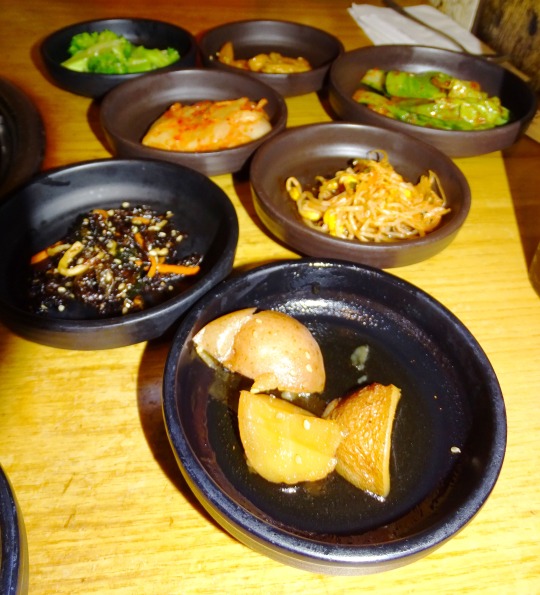





The hangul alphabet was published in Korea on October 9, 1446.
South Korea Hangul Day
South Korea Hangul Day, also known as Korean Alphabet Day, is observed annually on October 9. It’s a national holiday to commemorate the invention and proclamation of the Korean alphabet, known as Hangul (or Hangeul). It’s also celebrated in North Korea on January 15 as ‘Chosun-gul’ Day. Before the invention of Hangul, Koreans wrote using Classical Chinese with native phonetic writing systems. Hangul Day has been a national holiday since 1970, except for the years 1991 until 2012. We observe the day to commemorate King Sejong’s achievement and the promulgation of the ‘Hunminjeongeum,’ a document describing an entirely new script for the Korean language, which was later known as Hangul.
History of South Korea Hangul Day
Since its first inception in 1926, the date of Hangul Day has varied. In 1945, the South Korean government declared October 9 as Hangul Day, an annual legal holiday, and since October 9, 1970, Hangul Day has been an annual national holiday in South Korea. However, between 1991 and 2012, Hangul Day’s status as a holiday was canceled due to the South Korean government being pressured by major employers to increase the country’s annual number of workdays. As a result, the day remained as a commemoration but workers didn’t get the day off. On November 1, 2012, its status as a national day was restored.
Before Hangul was invented, Koreans used Chinese characters to write with native phonetic writing systems. In addition to a large number of characters to be learned, the grammatical differences between Korean and Chinese languages also became difficult for Koreans to write using Chinese characters. As a result, only those who had the privilege of education were literate. Therefore, King Sejong decided to create the Korean alphabet to promote literacy among all Koreans, and he proclaimed the publication of Hangul in 1446.
Despite all the benefits of Hangul, it almost went out of existence during the Choson dynasty. At the time, the elites who desired to preserve their status saw that Chinese characters were the only true way to write Korean. Hangul was then effectively banned by King Yeonsangun in the early 16th Century but then saw a revival towards the end of the century. It then had a resurgence in the 19th Century, and gradually grew more common, especially due to its role in Korean nationalism during the era of the Japanese occupation. In the 1970s, there was a decline in the use of Chinese characters, paving the way for the prevalent utilization of Hangul in almost all Korean writings today.
South Korea Hangul Day timeline
1894 The Initial Use in Official Documents
Hangul is adopted and used in the writing of official documents.
1910 The Continued Use in Schools
Although the official language of Korea becomes Japanese during the Colonial Rule, Hangul is still taught in Korean-established schools.
1938 The Script is Banned
Hangul is banned in schools as part of Japanese cultural assimilation.
1941 The Documents are Outlawed
All publications written in Hangul are outlawed.
1945 The Script is reinstated
Hangul is reinstated in Korea’s writing system following Korea’s independence from Japan’s colonial rule.
South Korea Hangul Day FAQs
Is learning Korean hard?
Korean might be ranked as one of the more difficult languages to learn by the Foreign Service Institute (FSI), but it’s still very much possible to learn as a non-native speaker.
Is Korean read left to right?
In today’s Korea, the majority of Korean is written horizontally, to be read from left to right.
Is Hangul scientific?
The Korean writing system, the Hangul, is considered to be the most scientific phonetic alphabet system. This is because its characters are based on the shapes of the parts of the human body that are used to enunciate the sound of those characters.
How to Observe South Korea Hangul Day
Visit the museum of King Sejong
Learn the alphabet
Raise the national flag
It’s fitting to visit the museum of King Sejong to celebrate Hangul Day. He was the one who invented the Korean alphabet. You can see exhibits explaining the creation of Hangul inside the museum. His reign is often seen as a golden period in Korean history.
The best thing to do to celebrate Hangul Day is to learn Hangul itself. If you are a non-Korean but interested in Korean culture, you may want to learn its alphabet. Hangul Day is the best time to do so!
A simple way to honor Hangul Day is to raise the Korean national flag. It can represent the pride of the country — the Korean alphabet.
5 Interesting Facts About The Korean Language
It’s a language isolate
‘Seoul’ means capital city
Verbs come last in the Korean sentences
It’s different in North and South Korea
It’s ‘our’ instead of ‘my’
It is said that Korean is commonly classified as a language isolate, meaning that it shows no significant link to any other existing languages.
Seoul, the capital city of South Korea, literally means ‘capital city’ in Korean.
Korean is a subject-object-verb (SOV) language.
The North and South Korean languages have distinct pronunciations, vocabularies, and even grammatical rules.
In the Korean language, the speakers use ‘our’ or ‘we’ instead of ‘my’ or ‘me.’
Why South Korea Hangul Day is Important
To commemorate
A holiday to learn
To celebrate where we come from
Hangul Day is observed to commemorate the invention and proclamation of the Korean alphabet. Besides, it’s celebrated in honor of King Sejong as the creator of Hangul.
Hangul Day can be observed by learning the Hangul itself. It’s the best time for those who are interested in learning about the Korean language and its alphabet.
Language is said to be a fundamental aspect of cultural identity. Celebrating Hangul Day can mean taking pride in one’s national identity.
Source
#W 32nd St#hangul alphabet#published#Korea#9 October 1446#history#575th anniversary#korean language#letters#sign#Midtown Manhattan#New York City#summer 2018#2013#original photography#architecture#cityscape#travel#vacation#Korea Way#Koreatown#neighborhood#tourist attraction#landmark#USA#South Korea Hangul Day#Korean Alphabet Day#SouthKoreaHangulDay#Banchan#food
1 note
·
View note
Photo


National Hangeul Museum "My Special Day" by Shinyoung Kim
lol <3
6 notes
·
View notes
Link
Second chapter of my first trip to Korea where I visit the Hangeul Museum and the National Museum of Korea, eat spicy octopus, try street food in Myeongdong and visit the Dongdaemun Design Plaza.
#south korea#korea#seoul#서울#한국#대한민국#명동#동대문시장#dongdaemun design plaza#ddp#dongdaemun#myeongdong#hangeul museum#national museum of korea#museum#history#korean history#trip#travel#alexander a. nastasi#blog#blogger#journey to korea#journey#street food#food#travelling#kimalexgat#culture#asia
0 notes
Photo
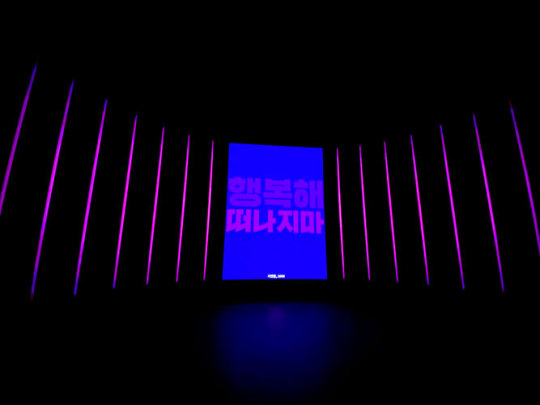
NATIONAL HANGEUL MUSEUM – Boundless
light and video installation
collab with Small Studio Semi and Alex Griff
2 notes
·
View notes
Text
From Yi Jeong-suk to BTS: exhibition revisits 90 years of Korean pop lyrics — The Korea Times
From Yi Jeong-suk to BTS: exhibition revisits 90 years of Korean pop lyrics — The Korea Times
Read more at The Korea Times
— by Park Ji-won: The speed of change in Korea over the past century is something remarkable. A century ago, Korea was a small, weak country which was under the control of Japan. Five years after it was liberated from Japan’s colonial rule with the end of World War II in 1945, the Korean War broke out. The nation was torn apart but rose from the ashes of the war and…
View On WordPress
#BTS#Korean Pop Lyrics: Melodies of Life (2020)#National Hangeul Museum#The Korea Times#Yi Jeong-suk
0 notes
Photo


Ever wanted to try your hand at woodblock printing? The National Hangeul Museum offers this experience with an excerpt from the book Hunminjeongeum, where King Sejong states the reasons for inventing the Hangeul alphabet
0 notes